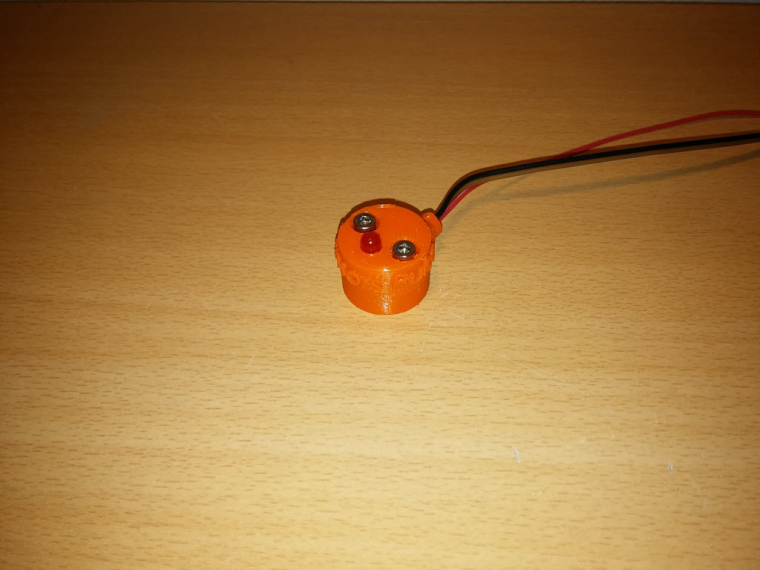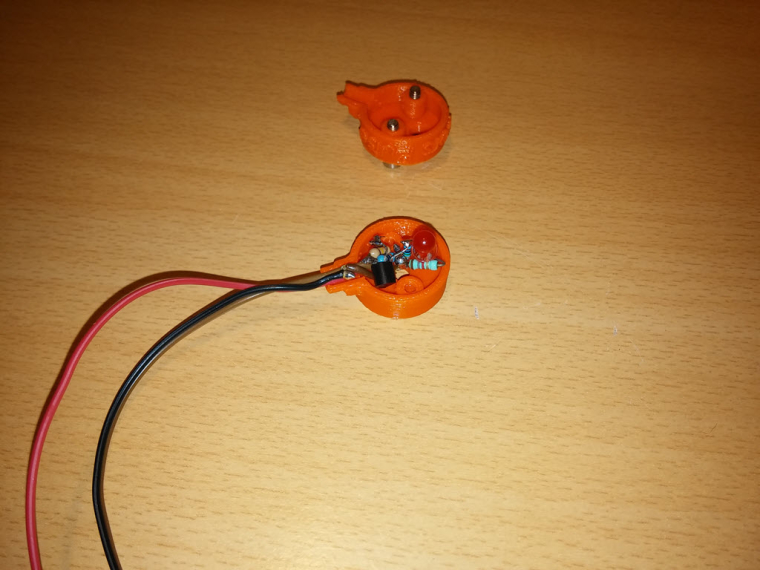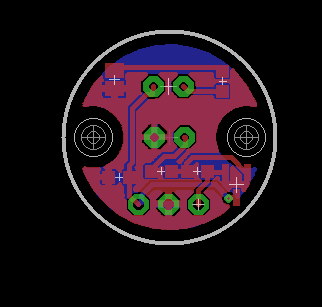Current Sensing?
-
@gohan - While it would be possible, its not allowing much surface to attach to the meter. My soloution will be out by tonight i hope. I'm proposing we attach this module to the meter and connect into another board that is attached to the side of the meter that is the heart of the module (a atmega328 board). The designs and schematic anyway, we can then ponder over what my designs call and we can improve before production and release to openhardware.io
-
@Samuel235
Of course it would need a bigger surface than an led diameter, but could be smaller in volume.@gohan The trouble is though, as i mentioned just in the post regarding the product from OpenEnergyMonitor, a photo transistor is not the best/optimal way to go about this. As the LM393 module is built, it is the correct method. Using a photodiode and a comparator. No one seems to be doing that, and this is exactly what i'm doing right now. I'm pretty confident we can get this to a size that would satisfy your suggestions, we shall see.
Edit: Typo.
-
Beep beep lol
I'm joking. That was really quick to do. The box is same size 22mm. I'm not sure to see the point of making it smaller as it needs holding points.
I've used solidworks.
Yep I've done the pcb too. Ultra low power, a few parts. But I need to test the circuit (maybe at lunch) as I'm not planning to use comp nor amp. Again I did it because it was quick and because I can :) -
Beep beep lol
I'm joking. That was really quick to do. The box is same size 22mm. I'm not sure to see the point of making it smaller as it needs holding points.
I've used solidworks.
Yep I've done the pcb too. Ultra low power, a few parts. But I need to test the circuit (maybe at lunch) as I'm not planning to use comp nor amp. Again I did it because it was quick and because I can :)@scalz - I might as well just leave it to you >.<
Nice, solidworks is what i'm using at the moment too. Fancy sharing the files or is it just a quick rough idea that you're not sticking with?
Would be nice to compare the two designs together for the circuit. I might see about getting a board produced at my Uni on the routing machine. Lets both make our versions and would be nice to compare them side by side. (I'm thinking about sending you one of mine once its produced, and you're welcome to scrutinise it to help me improve)
Out of interest, i'm looking at either 3.5mm audio jack or RJ45 (RJ45 looks to be a slightly cheaper route) to connect back to the 'arduino' box. What are you thinking of doing for connectivity?
-
It took me less an hour for the box+pcb..i wouldn't have invest more time as i've lot of others stuff to do.
For the connector, I let the user choosing as I'm not really planning to design a dedicated pcb for the mcu side. Because there are already lot of boards and it just need one signal. Or I have multiple custom dev board with usb connection too etc. I was mainly interested in doing a low power sensor with a good digital level. Now I need to check my little idea.. -
It took me less an hour for the box+pcb..i wouldn't have invest more time as i've lot of others stuff to do.
For the connector, I let the user choosing as I'm not really planning to design a dedicated pcb for the mcu side. Because there are already lot of boards and it just need one signal. Or I have multiple custom dev board with usb connection too etc. I was mainly interested in doing a low power sensor with a good digital level. Now I need to check my little idea..@scalz - Perfect, okay. Well i will sort something out with the MCU side in mine then. I might go down the route of custom board, but then again, it may be easier for the user to just use a arduino maybe, just that the connection of the sensor would be a little 'temp' if i don't do a custom board maybe. Not sure yet. Will get the sensor product sorted first.
-
@gohan The trouble is though, as i mentioned just in the post regarding the product from OpenEnergyMonitor, a photo transistor is not the best/optimal way to go about this. As the LM393 module is built, it is the correct method. Using a photodiode and a comparator. No one seems to be doing that, and this is exactly what i'm doing right now. I'm pretty confident we can get this to a size that would satisfy your suggestions, we shall see.
Edit: Typo.
-
assembled my sensor this noon.
It looks like this from the top view, with the indication led (optional if battery powered device). The sensor is of course on bottom.
So i just ran a few tests and was able to detect up to 40hz. Then missed pulses started. but i've not tweaked it yet.
My test config was a signal generator connected to an external led, put it in front of my sensor. And checked the result with a scope.
I think 40Hz should be enough lol, and was very suprised i was able to go as high with my circuit, that's cool.I'll upload my files at openhardware
Enjoy MySensors Pulse :)
-
assembled my sensor this noon.
It looks like this from the top view, with the indication led (optional if battery powered device). The sensor is of course on bottom.
So i just ran a few tests and was able to detect up to 40hz. Then missed pulses started. but i've not tweaked it yet.
My test config was a signal generator connected to an external led, put it in front of my sensor. And checked the result with a scope.
I think 40Hz should be enough lol, and was very suprised i was able to go as high with my circuit, that's cool.I'll upload my files at openhardware
Enjoy MySensors Pulse :)
-
@Samuel235
My bet is there isn't one :D -
@gohan - I'd be pretty shocked if there was when it was made this quick. Either way, its very nice and a quick turn around.
-
@Samuel235 do not underestimate the @scalz man!
-
thx guys :joy:
@Samuel235
in fact i'm jealous of you too as you're studying electronics, looks cool ;)
I've only designed the pcb for the moment, electronics in my thing is air wired, i don't remember how this soldering style is named??
so this looks like this

i'll check a few things for tomorrow, and also would like to try sensing a few others led colors and i'll post, no problem. I've been able to go up to 110hz though, then it was fluctuating too much (40hz was because i forgot to remove a capa on the signal generator side). -
@Samuel235
My bet is there isn't one :D@gohan said in Current Sensing?:
@Samuel235
My bet is there isn't one :D@Samuel235 said in Current Sensing?:
@gohan - I'd be pretty shocked if there was when it was made this quick. Either way, its very nice and a quick turn around.
rooo i didn't pay attention! So who pay for the bet :joy: but that's gohan which is betting, right :stuck_out_tongue:

So there is one, which should be very low power, afew uA (compared to the 0.4mA min of the lm393), and cheap. I just need to change a few routes, very quick.I told you ;) (i'm kidding of course)
-
@gohan said in Current Sensing?:
@Samuel235
My bet is there isn't one :D@Samuel235 said in Current Sensing?:
@gohan - I'd be pretty shocked if there was when it was made this quick. Either way, its very nice and a quick turn around.
rooo i didn't pay attention! So who pay for the bet :joy: but that's gohan which is betting, right :stuck_out_tongue:

So there is one, which should be very low power, afew uA (compared to the 0.4mA min of the lm393), and cheap. I just need to change a few routes, very quick.I told you ;) (i'm kidding of course)
-
ahah, well played ;)
-
No, you owe us all money! STAND BY YOUR BET! xD
I like it @scalz - you're approach is much better for low power modes, much better than mine. I see that the comparator is not needed for such application, i'm going that route because its the 'done' way. However, you're style is much better for battery powered nodes which will naturally attract people.
I'm really struggling to get to grips with KiCAD and i'm starting to give up after just one footprint. This thing would have been hours ago if i just used eagle.
The style is more 'inline' (not the technical term, but that is how i know it). What photodiode/resistor are you using? Most should pick up quite a decent range of wavelengths on the blinking LED.
-
thx guys :joy:
@Samuel235
in fact i'm jealous of you too as you're studying electronics, looks cool ;)
I've only designed the pcb for the moment, electronics in my thing is air wired, i don't remember how this soldering style is named??
so this looks like this

i'll check a few things for tomorrow, and also would like to try sensing a few others led colors and i'll post, no problem. I've been able to go up to 110hz though, then it was fluctuating too much (40hz was because i forgot to remove a capa on the signal generator side).@scalz - The general photodiode has a range of "Wavelength range (S10%) 400 nm to 1100 nm (SFH
213)", quoted from a datasheet here: http://www.osram-os.com/Graphics/XPic5/00101689_0.pdf. So this means that we should be good for a fair few different LED colours. -
@scalz - I wouldn't be jealous of me, my school is pretty bad to be honest with you. But it gets me a degree! I'm actually working/studying in the robotics field, so not just electronics :) We have a PCB router at school and I'm trying to get permission to use this for our projects here too, only for prototyping ofc. Finished boards will be ordered from a board house for a more professional feel, but it allows me to get an idea of the size of board we can get our designs down too and such.
I've also given up with KiCAD for now, it feels so unprofessional to get libraries and such made. Individual addons/programs inside of KiCAD to do different aspects just feels so clunky to me right now, eagle has my attention until i get my hands on solidworks PCB.
